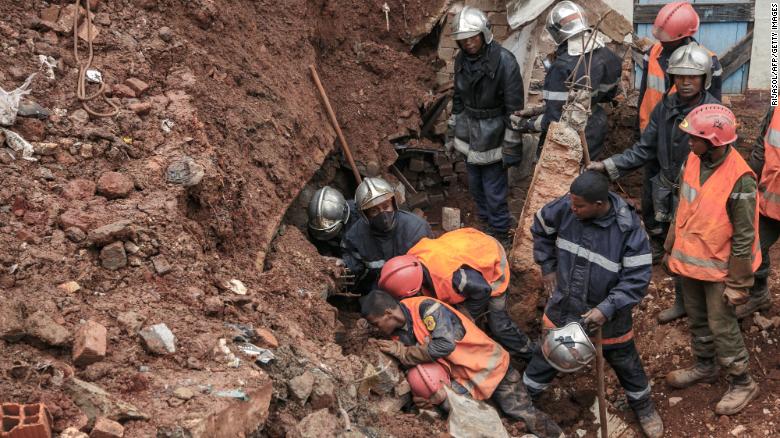More than 80 people have now died and tens of thousands more are impacted after Tropical Cyclone Ana tore across southern Africa this week, the European Commission’s humanitarian agency said Friday.
The European Civil Protection and Humanitarian Aid Operations (ECHO) did not provide a breakdown of where the deaths occurred in its latest update, but earlier said the island nation of Madagascar — where prolonged drought has pushed people to the brink of famine — had been worst-hit, with at least 41 deaths and more than 110,000 people affected.
Ana made landfall in Angoche, Mozambique on Monday, hitting Malawi and Madagascar as well, the South African Weather Service said in a press release.
In Mozambique, at least 15 people were killed and more than 45,000 have been affected, while Malawi has reported at least 11 deaths, with nearly 217,000 people impacted, according to ECHO. It said that heavy rainfall had caused rivers to overflow, and that floods and landslides resulted in casualties and widespread damage.
Though Ana has weakened, the South African Weather Service said that Malawi and Zambia could experience more heavy showers over the weekend.
“Southern African countries have been repeatedly struck by severe storms and cyclones in recent years that have impacted food security, destroyed livelihoods and displaced large numbers of people,” she added.
Several parts of Africa have battled destructive floods over the past year as they deal with the twin issues of prolonged drought and an increase in the intensity of rainfall, which create prime flooding conditions.
As the Earth continues to warm because of human-induced climate changes, the whole continent is projected to experience a greater frequency of heavy rain, according to the Intergovernmental Panel for Climate Change’s latest report. Southern Africa is particularly vulnerable to drought in a warmer climate.
The region impacted by Tropical Cyclone Ana is projected to see an increased intensity of such events as global temperatures rise.
“This latest storm to hit Mozambique is a blunt reminder that the climate crisis is very much a reality,” said Maria Luisa Fornara, Unicef’s representative in Mozambique, in a statement.
“Since most of the areas are inaccessible and considering the large number of displaced households, additional resources are required to provide assistance to all the affected people.” Climate change is coming for our coffee
Character went on to say that he had appealed for humanitarian assistance from “the international donor community, relevant United Nations agencies, non governmental organizations, the local private sector as well as all fellow citizens of goodwill.”
A meteorologist from the Met Office in London told CNN that “the footprint of ex-Tropical Storm Ana will continue to be the source of severe thunderstorms, bringing torrential rain across the affected area.”
“The remnants of Ana will slowly transfer westwards over the coming days and offer a ready source of moisture for some torrential showers and thunderstorms. Significant flooding impacts have already been reported across Malawi in association with this system.”







